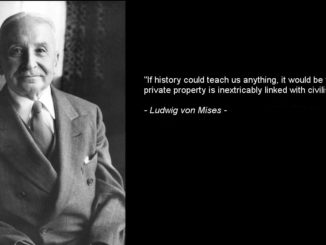It has been some time since we have moved home so when we decided that we were going to up sticks and move somewhere a little more remote, I thought I knew the game and how it was played.
No. Much has changed since the 90s when we last moved. Here is a comparison of moving home then and now:
Estate agents
Back in the day, Estate Agents would work all hours. The office rarely closed, they often worked Sundays and as late in the evening as necessary for deals to be done. Emails were not really a thing yet so the only way to communicate was via phone – landlines almost exclusively and knocking on the door and having a face to face conversation. Things did move a little more slowly than you would expect nowadays but every conversation was condensed to have the maximum benefit to all parties as one had to go out of one’s way to have the conversation in the first place.
Nowadays, Estate Agents work from 9-5, sometimes a half day on Saturday and never on a Sunday or bank holiday. The message is “Try not to call me but leave an email and I’ll get back to you”. One other apparent function of the Estate Agent appears to be creating the largest separation between vendor and purchaser possible. I understand that there is a possibility of a deal being done behind the EA’s back but it doesn’t feel right. I’ve always swapped phone numbers with those that I’m buying from or selling to. This means that blockages with EAs or solicitors can be found faster and fixed more quickly.
Putting your house on the market
A call to an Estate Agent usually meant a visit at a time of your convenience. You would make the house look presentable by hiding pants and things in a cupboard, have a swoosh round in the bathroom and kitchen then await the visit of the Estate Agent and photographer. There’d be room measurements with particularly vicious looking, spring loaded tape measures, hand drawn sketches and a rushed picture taken of the front and rear elevations. The act of asking an estate agent to visit meant a brief conversation about costs for being with sole or multiple Agents, a handshake then your property’s details would then be photocopied and posted to anybody that could or could not afford it or even want it. The price of the property would be set – a straight figure, Offers In the Region Of or offers above a figure.
Different now. You make an appointment usually inside working hours. A junior will come and take LASER measurements in seconds and a contract is proffered for signature giving the terms and conditions of their service to you. No longer can you add or remove an Agent at will because they’ve mess you around or don’t send anybody – you’ll need to observe a 30 day notice period to take your property off an Agent’s books and pay a financial penalty if this is broken. Within hours, all the lovely colour photos of your home are spread far and wide across the interwebs and the description will have you wondering if you really want to move. EAs no longer wish to set prices as this restricts market values and EAs fear undervaluing any property. The growing trend is to offer a band value which can be as much as £50 – £100k wide so you pay what you think the property is worth.

Property details
Now officially on the market, thousands of people that have signed up to On the Market, Rightmove, Zoopla and a multitude of other property websites will receive the details of your property. Some websites are better than others where you can filter on number of bathrooms, parking availability, retirement homes etc. All pictures are sharp and in glorious colour and did you pay for the premium listing? For this, all prospective purchasers can click on a virtual tour where you can watch a video of the EA giving a commentary as they take a video whilst touring the property. There’ll also be a 3D virtual tour where you can click on footprints around the property, stop and take a 360° look from that vantage point. Yes, if done properly, you can actually look out of the window and see far more detail than previously offered. Some of these are incredibly clumsy but a well put together virtual tour can save you a lot of time and travelling. You bought the premium plus service? Great! Here are videos taken by drone of the garden and all other elevations of the property in 4K. Again, if done well, these videos can help you decide almost there and then if you want to bid or not. Google street view and Google Earth are worth their weight in gold at this point. We have spent hours going through properties that are in the ‘probable’ list, trying to track them down because the EA will not give you the address unless you have booked a viewing. So much can be gleaned from these Google sites – the industrial units that were carefully cropped out of the bedroom window shot, the pylon next door, the location of neighbours, businesses that could be disruptive, the bypass that was ‘overlooked’ in the particulars. Bloody hell, there’s a factory-sized school nearby and it’s 3 doors from you. And so on.
Previously, a scan through 20 or more black and white photocopied sheets meant that you had about a dozen or so properties that were ‘possibles’ so time needed to be set aside for viewing them. Addresses were nearly always given and a lot of information needed to be assembled if you were going to view.
Arranging a viewing
A phone call would be made to the EA and a time agreed for you to visit the property. As things were always so busy, you would generally be shown around by the vendors unless the EA had a bit of spare time and could do the honours. This was good as it allowed you to talk to the vendor and make up your own mind on their answers. It enabled a lot of information to be gathered on the property so a reasonable decision could be made.
Slightly different now.. and that’s sarcasm right there. More often than not, properties now have open days. A time slot of perhaps half a day is made available where the vendor is told to make themselves scarce – there has also been a massive exercise prior to this in making your home look like an anonymous show home. Suggestions of removing photographs where possible and sterilising the ambience that we all take time to build in a home must be expunged – I get it, but it feels sad and soulless to me. Back to the viewing, anybody that wants to view will need to make an appointment and be allocated a slot and may God forgive your soul if you are late. A queue of people will be lining up outside awaiting their showing. The EA will guide you around and make sure you are out at the allotted time, ready for the next people though bumping in to others is inevitable. The EA will know the answer to some questions but anything else will be fed back to the vendor and a response given in due course. This approach feels uncomfortable for me. You may well be in competition with these other people for this property and here you are, smiling and being polite with each other and all the time, in somebody else’s home.

So you want to buy?
Originally, an offer would be made and a bit of haggling before a deal was struck or you walked away. No longer. The EA will contact you once all other viewing days have been finished and ask for your feedback – second viewings must of course be timetabled in to another viewing day. Let’s assume you would like to buy so you will be asked if you want to make an offer – yes I do and you make your offer either below or somewhere within the expected value band. If you are in the ball park then you will asked for a full and final bid. For all you know, you are already the highest bidder but do you want to lose out? Should you bid a little higher in order to see off the competition or do you hold firm and deal with the possible loss of a property and go through the rigmarole of research, viewing, travelling and bidding again whilst always having the image in your mind of the one that got away? Forget not that you may already have an impatient buyer for your property and the last thing you want to do is extend or break the chain.
Yay, you’ve bought your property! Now you need to pay the stamp duty. Not a first time buyer? That’s going to hurt. Increases in stamp duty – a tax on buying a home have skyrocketed. A £600,000 property now demands a tax bill of £20,000 whereas a property costing £750,000 will incur a tax bill of £27,500 – more if it is a second home. Imagine that money going straight in to local businesses for new carpets, curtains, furniture, decorating, improvements. How much more would that improve the economy than giving it to a feckless, authoritarian, overbearing monopoly that runs the country?
I hope that this doesn’t appear too negative. Advances like Google now allow you to know more about a potential home than ever before. Crime stats for a given postcode are easy to find as is the makeup of the people in the area in which you may want to move, flood risks, selling and sale figures of a particular property as well as those in the local area. Improved communications now means things can happen much faster than ever before… but it won’t seem like it. These things also mean that pigs with lipstick can initially appear as beautiful homes that make you drive across the country to view – don’t forget that you may only be able to view one per day as open days might not overlap – only to think “My God, this place is awful” just as you start walking up the path.
I did read somewhere that instead of the EA being paid for by the vendor and therefore working solely on their behalf, it would make more sense for the EA to be jointly paid by the vendor and purchaser, thereby ensuring a higher quality of service all round. This does make some sense to me but when looked at in the round, the whole method of buying and selling in England is insane.
With all the advances, I think I still prefer the previous ways.
© RatCatcher 2022



